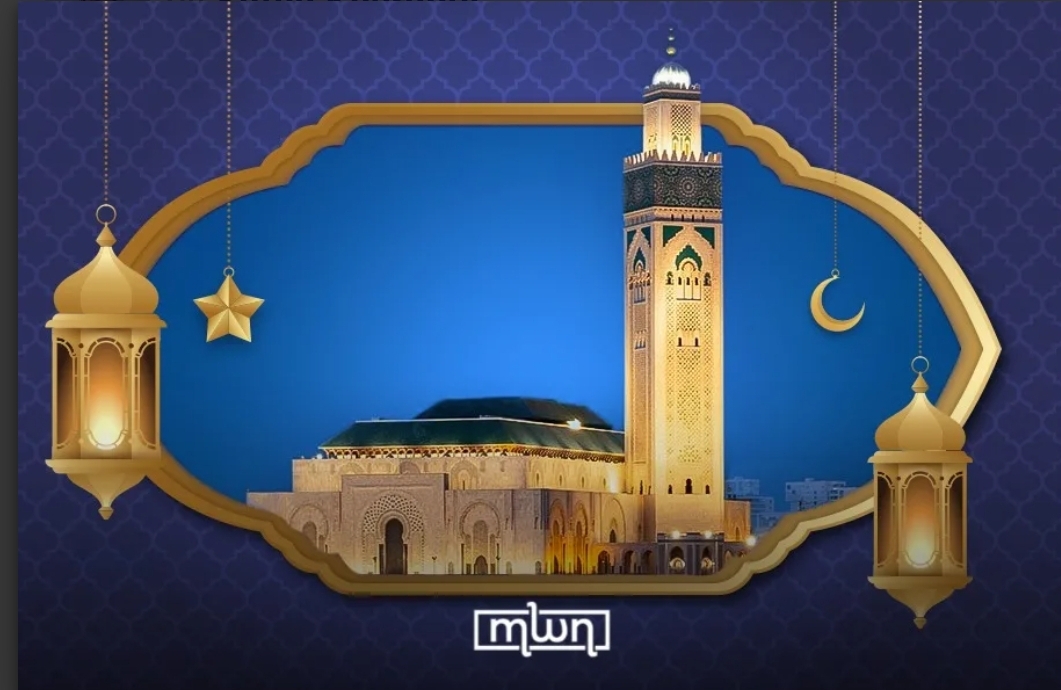Rabat – Astronomy calculations have predicted Ramadan 2025 to fall in Morocco on March 2.
Ibrahim Akhyam, a researcher in the science of timekeeping and a member of the Islamic Moon Sighting Project said the beginning of Ramadan this year will most likely be on March 2.
“The sighting of the Ramadan crescent will be extremely difficult in Morocco on the night of 29 Sha’ban 1446 Hijri, which corresponds to 2025,” he told Morocco World News (MWN).
With this update, the astronomer expects that Sha’ban will complete in 30 days due to the lack of ideal sighting conditions.
“These astronomical calculations serve as a scientific preliminary for the moon sighting,” he said, noting that the official date will be confirmed by the relevant authorities.
Morocco is expected to announce that the crescent moon will be “clear or not clear” on the day of the sighting by Friday.
During Ramadan, the ninth and holiest month of the year, Muslims abstain from eating, drinking, and smoking from dawn to sunset.
Muslims also cannot also engage in any intimate activity during fasting hours.
Fasting hours differ from one country to another depending on the time zone.
During the holy month, many Muslims also devote a remarkable amount of time to extra prayers. Muslims gather at mosques during isha prayer, which is followed by Taraweeh, a highly recommended Sunnah (tradition) according to Islam.
Ramadan is also known for its unique atmosphere and rituals in Morocco.
Unlike Morocco, astronomers are expecting Ramadan to fall on March 1 in other countries like Saudi Arabia.
The holy month is a special occasion in the North African country, where cultural traditions come alive and time is spent with family and loved ones.
Moroccans celebrate Ramadan iftar (breaking the fast) with many foods, including dates, msmen (flat bread), harira (traditional soup), and several other main courses and side dishes.
The atmosphere also includes fun outdoors activities following Taraweeh prayers. Many restaurants offer spectacles and shows featuring traditional folklore music.
Moroccan streets also remain bustling with people, sometimes until dawn.
Morocco is set to confirm the official date for Ramadan after the Ministry of Islamic Affairs calls on its authorized committees to sight the crescent moon on the eve or a few days before Ramadan starts.
The country is eagerly preparing for this special month’s arrival.
Moroccan provinces have already announced measures to ensure a sufficient supply of consumer goods in local markets, actions that are needed since there has been a dip in agriculture production as a result of drought.
The lack of rain has especially affected cereal production, in addition to red meat, poultry, and fisheries, with many concerned about the exaggerated cost of commodities.
Locals are well aware that Ramadan is characterized by increased demand for food products and changes in consumption patterns.To tackle imbalances or local dysfunctions in markets, the interior ministry frequently tasks committees to monitor commodities prices – especially during Ramadan.
Ibrahim Akhyam, a researcher in the science of timekeeping and a member of the Islamic Moon Sighting Project said the beginning of Ramadan this year will most likely be on March 2.
“The sighting of the Ramadan crescent will be extremely difficult in Morocco on the night of 29 Sha’ban 1446 Hijri, which corresponds to 2025,” he told Morocco World News (MWN).
With this update, the astronomer expects that Sha’ban will complete in 30 days due to the lack of ideal sighting conditions.
“These astronomical calculations serve as a scientific preliminary for the moon sighting,” he said, noting that the official date will be confirmed by the relevant authorities.
Morocco is expected to announce that the crescent moon will be “clear or not clear” on the day of the sighting by Friday.
During Ramadan, the ninth and holiest month of the year, Muslims abstain from eating, drinking, and smoking from dawn to sunset.
Muslims also cannot also engage in any intimate activity during fasting hours.
Fasting hours differ from one country to another depending on the time zone.
During the holy month, many Muslims also devote a remarkable amount of time to extra prayers. Muslims gather at mosques during isha prayer, which is followed by Taraweeh, a highly recommended Sunnah (tradition) according to Islam.
Ramadan is also known for its unique atmosphere and rituals in Morocco.
Unlike Morocco, astronomers are expecting Ramadan to fall on March 1 in other countries like Saudi Arabia.
The holy month is a special occasion in the North African country, where cultural traditions come alive and time is spent with family and loved ones.
Moroccans celebrate Ramadan iftar (breaking the fast) with many foods, including dates, msmen (flat bread), harira (traditional soup), and several other main courses and side dishes.
The atmosphere also includes fun outdoors activities following Taraweeh prayers. Many restaurants offer spectacles and shows featuring traditional folklore music.
Moroccan streets also remain bustling with people, sometimes until dawn.
Morocco is set to confirm the official date for Ramadan after the Ministry of Islamic Affairs calls on its authorized committees to sight the crescent moon on the eve or a few days before Ramadan starts.
The country is eagerly preparing for this special month’s arrival.
Moroccan provinces have already announced measures to ensure a sufficient supply of consumer goods in local markets, actions that are needed since there has been a dip in agriculture production as a result of drought.
The lack of rain has especially affected cereal production, in addition to red meat, poultry, and fisheries, with many concerned about the exaggerated cost of commodities.
Locals are well aware that Ramadan is characterized by increased demand for food products and changes in consumption patterns.To tackle imbalances or local dysfunctions in markets, the interior ministry frequently tasks committees to monitor commodities prices – especially during Ramadan.

